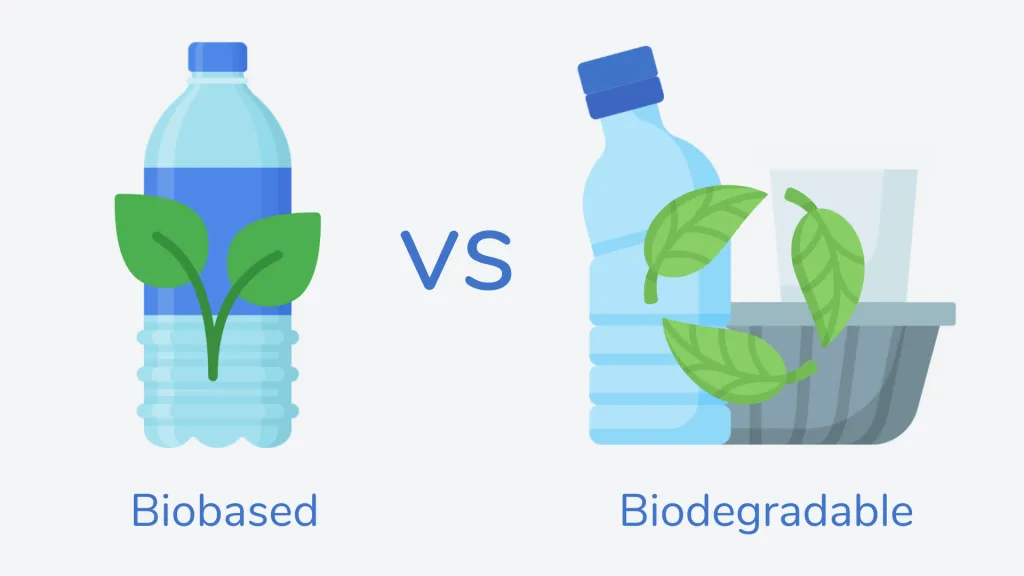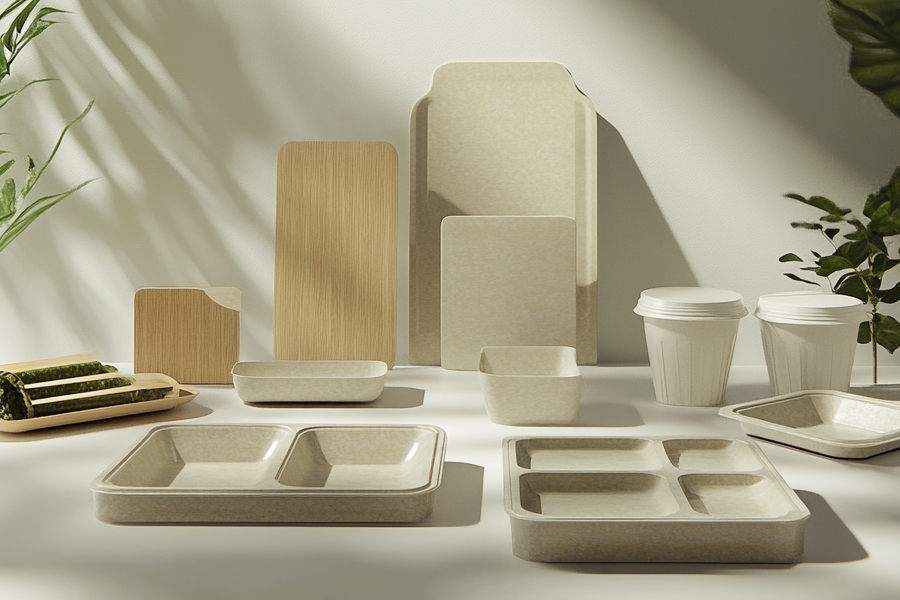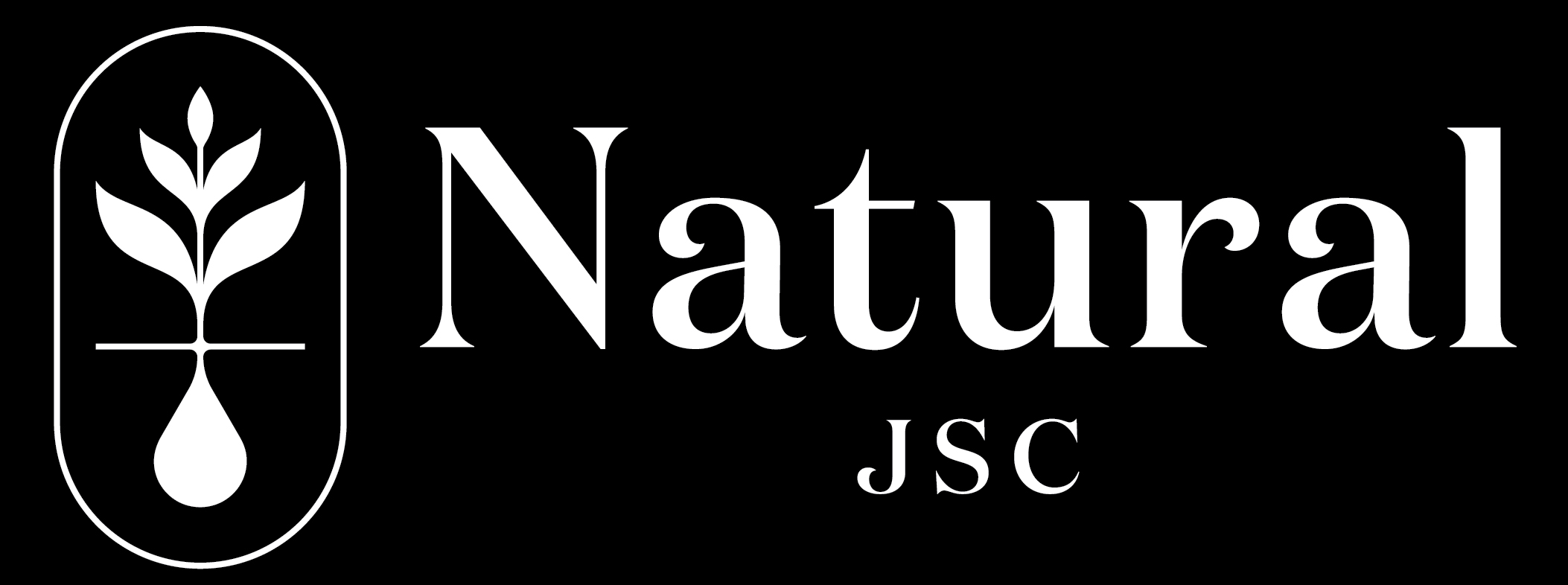Although they have been in production and use for a long time, the concept of bio-based biodegradable plastics is still relatively unfamiliar to some of us. This somewhat affects the experience of using products made from this type of plastic, especially when we don’t know if they are truly environmentally friendly and safe for our health. Let’s find out more in the following article.
Discovering bio-based biodegradable plastics
Bio-based biodegradable plastics are a group of materials belonging to bioplastics, alongside fossil-based plastics and bio-based plastics. As the name suggests, this type of bioplastic is made from typical biological materials such as sugarcane, coffee, corn, etc., and possesses biodegradable properties. This means that at the end of its life cycle, this bioplastic will decompose in a suitable natural environment, turning into water, CO2, and nutrients for the next generation of biological materials.
Why are bio-based biodegradable plastics superior?
You may not know that bio-based biodegradable plastics are one of the leading potential solutions to replace traditional plastics today. Not only are they trusted, but green businesses are also increasingly incorporating this type of plastic into the production of key products. So, what makes bio-based biodegradable plastic stand out compared to other types of bioplastic?
Comparison with bio-based plastics
In terms of properties, bio-based plastics and bio-based biodegradable plastics are quite different. Although made from biological materials, bio-based plastics are designed to have the characteristics of traditional PET plastic. Therefore, this type of plastic is durable and resilient but also loses its biodegradability and must be recycled like traditional plastics.
Meanwhile, bio-based biodegradable plastics, while not as durable or having as long a “lifecycle” as bio-based plastics, still retain their biodegradability in the natural environment. In fact, if properly composted, this plastic can even become compost, continuing to provide nutrients for plants and soil.

Comparison with fossil-based bioplastics
As you know, not all plastics made from biological materials are biodegradable. Conversely, not all plastics made from fossil materials become microplastics at the end of their life cycle. Fossil-based bioplastic is one of those special exceptions because it is specifically designed to be fully biodegradable.
So if they both possess biodegradability, why is there a difference in “preference”? The answer lies in the source of the constituent materials. Currently, fossil materials such as petroleum and coal are becoming increasingly scarce and are classified as non-renewable resources because they take millions of years to form. This rate is fundamentally unable to meet the increasingly high demand worldwide.
With bio-based biodegradable plastics, the supply issue becomes much simpler because biological materials such as sugarcane, corn, straw, etc., are all sustainable resources. Not only do they have a high production rate, but they are also renewable and replenishable over time. At the same time, the harvesting and processing of biological materials does not require excessive resources or harmful chemicals. We can see that bio-based biodegradable plastics significantly reduce the pressure on fossil resource extraction while contributing to environmental protection from harvest to end of life.
Typical bio-based biodegradable plastics
In recent years, bio-based biodegradable plastics have gradually won over society with their outstanding properties and high level of environmental friendliness. This has led to the emergence of numerous types of bio-based biodegradable plastics, including:
PLA (Polylactic Acid)
PLA belongs to the thermoplastic polyester group, made from substances formed during the fermentation of sugars from biological materials such as corn starch, cassava, potatoes, sugar cane, etc. As a thermoplastic, PLA can be heated and molded into various shapes, providing opportunities for the development of diverse products for a wide range of business markets.
Examples include the production of food containers, drinking cups, spoons, and forks. More importantly, it can be used in biodegradable medical devices such as stents and catheters. Because it is bio-based and does not require the use of harmful chemicals in its production, PLA is completely environmentally friendly and safe for users’ health.
PHA (Polyhydroxyalkanoates)

Unlike PLA, PHA originates from sugar, starch, vegetable oil, etc. Specifically, it involves the natural fermentation of sugar and fats by bacteria from these substances. This process produces R-hydroxyalkanoic acid—the main component behind PHA’s polyesters—giving PHA many physical and chemical properties similar to traditional plastics. As a result, this type of plastic is used not only in the product packaging and food markets but also in medical devices (syringes, surgical instruments, etc.) and for producing organic fertilizers and agricultural materials.
PBS (Polybutylene succinate)
The main components that make up PBS are 1,4-butanediol and succinic acid, commonly found in corn, sugarcane, etc. Therefore, PBS is completely bio-based and possesses full biodegradability, breaking down into biomass, water, and CO2 after decomposition. Like PHA and PLA, PBS is widely used in many markets, ranging from food packaging and medical applications to construction materials.
Conclusion
Bio-based biodegradable plastics can be seen as the perfect combination of the advantages of the other two groups of bioplastics. They leave no negative impact at the end of their lifecycle and are derived from renewable, sustainable materials. If you’re looking for an alternative to traditional plastics, this type of plastic is undoubtedly a top choice.
